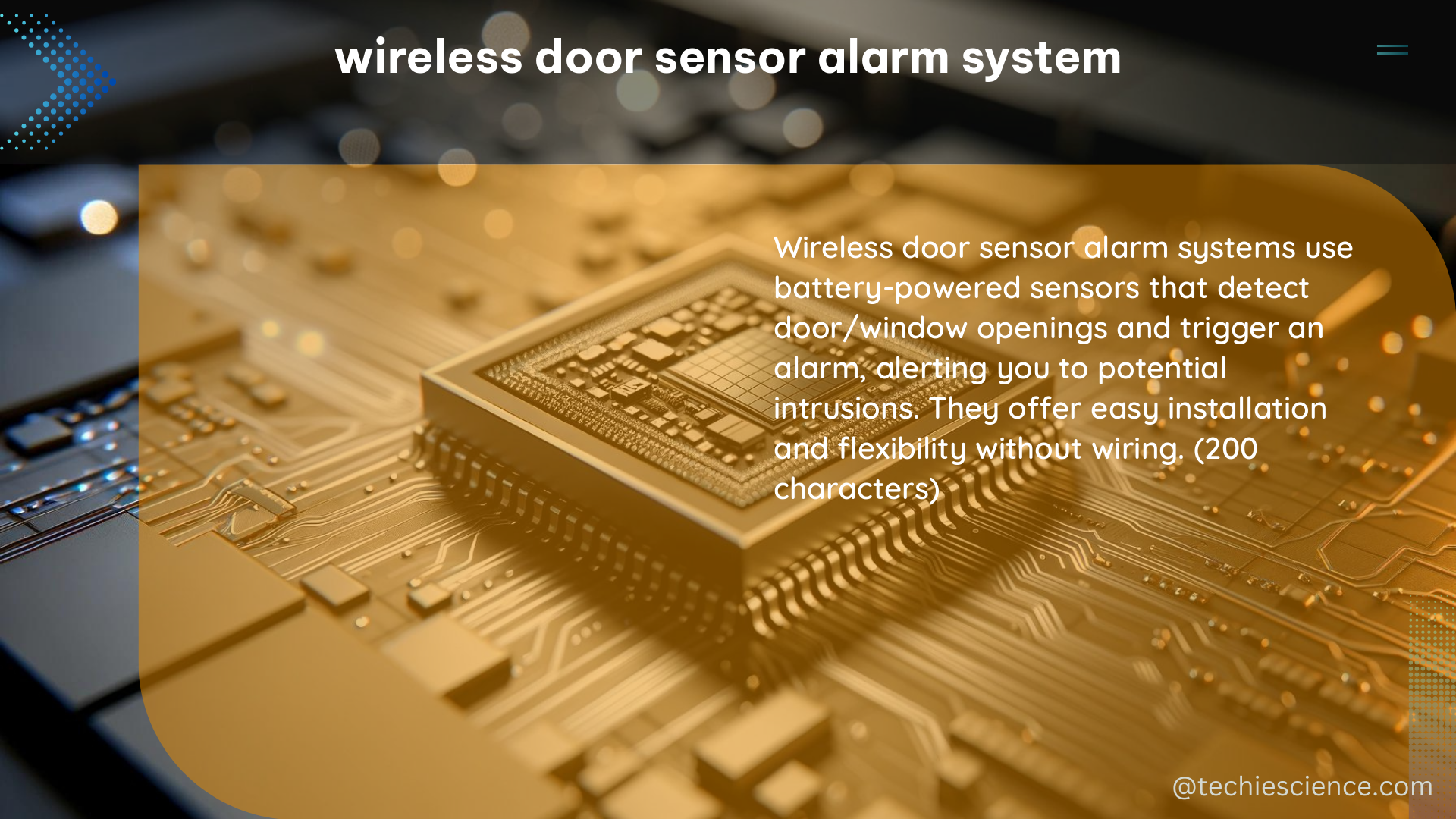Wireless door sensor alarm systems are a popular choice for home and office security, offering a convenient and flexible solution for monitoring entry points without the hassle of wired installations. These systems typically consist of wireless door sensors that communicate with a central control unit or receiver, providing real-time alerts and notifications when a door or window is opened. In this comprehensive guide, we’ll dive deep into the technical specifications, performance metrics, and DIY implementation of wireless door sensor alarm systems.
Frequency Range and Transmission Range
Wireless door sensors typically operate in the 315MHz or 433MHz frequency range, although other frequencies may also be used. The frequency range is an important specification because it determines the compatibility of the sensor with other devices and the range of communication. The transmission range of a wireless door sensor is the maximum distance between the sensor and the receiver that allows for reliable communication. This range can vary depending on the specific sensor and the environment, but it is typically in the range of 100-500 feet in open air.
Power Consumption and Battery Life

The power consumption of a wireless door sensor is a critical factor for battery life and overall system efficiency. The sensor should consume minimal power in sleep mode and have a low duty cycle to conserve battery life. A well-designed wireless door sensor can have a battery life of up to 2 years with typical use, depending on the sensor’s power consumption and the frequency of transmissions.
Response Time and Security
The response time of a wireless door sensor is the time it takes for the sensor to detect an event and transmit the signal to the receiver. A fast response time, typically less than 1 second, is important for ensuring timely notifications and preventing false alarms. The security of a wireless door sensor is also a crucial consideration for preventing unauthorized access and ensuring the privacy of the system. The sensor should use encryption, such as 128-bit AES, and other security measures to protect against hacking and tampering.
Ease of Installation
The ease of installation of a wireless door sensor is an important factor for user experience and system reliability. The sensor should be easy to install and configure, with clear instructions and minimal hardware requirements. Many wireless door sensor alarm systems are designed for DIY installation, requiring no wiring and simple setup procedures.
DIY Wireless Door Sensor Alarm System
For a DIY wireless door sensor alarm system, the following components and tools may be required:
- Wireless Door Sensor and Receiver: The core components of the system, the wireless door sensor and receiver, are responsible for detecting door/window openings and transmitting the signal to the control unit.
- Arduino Board and Shield: An Arduino board, such as the Arduino Uno or Arduino Nano, can be used as the control unit to process the signals from the wireless door sensors and trigger the alarm or notification system.
- 433MHz Receiver Module: A 433MHz receiver module is required to interface the Arduino board with the wireless door sensors, allowing the control unit to receive and interpret the sensor signals.
- Breadboard and Jumper Wires: A breadboard and jumper wires are used for prototyping and connecting the various components of the DIY system.
- Soldering Iron and Solder: A soldering iron and solder may be needed for more permanent installations or custom modifications to the system.
- Programming Software: Software, such as the Arduino IDE, is required to write the code and program the Arduino board to control the wireless door sensor alarm system.
Technical Specifications
Here are some technical specifications for a typical wireless door sensor alarm system:
| Specification | Value |
|---|---|
| Frequency Range | 433MHz |
| Transmission Range | Up to 500 feet (open air) |
| Power Consumption | < 10uA in sleep mode |
| Battery Life | Up to 2 years (with typical use) |
| Response Time | < 1 second |
| Security | 128-bit AES encryption |
| Ease of Installation | Simple setup with no wiring required |
Reference Links
- Wireless Door Sensor – Ultra Low Power
- Interact with 433mhz wireless door sensors
- Hacking a wireless burglar alarm sensor
By understanding the technical specifications, performance metrics, and DIY implementation details of wireless door sensor alarm systems, you can make an informed decision and create a customized security solution that meets your specific needs. Whether you’re a homeowner, small business owner, or DIY enthusiast, this comprehensive guide will provide you with the knowledge and resources to effectively deploy a wireless door sensor alarm system.

The lambdageeks.com Core SME Team is a group of experienced subject matter experts from diverse scientific and technical fields including Physics, Chemistry, Technology,Electronics & Electrical Engineering, Automotive, Mechanical Engineering. Our team collaborates to create high-quality, well-researched articles on a wide range of science and technology topics for the lambdageeks.com website.
All Our Senior SME are having more than 7 Years of experience in the respective fields . They are either Working Industry Professionals or assocaited With different Universities. Refer Our Authors Page to get to know About our Core SMEs.